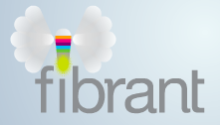Wisconsin Republicans Want More Local Tax Dollars Flowing to AT&T
The University of Wisconsin System is involved in a broadband stimulus project to expand fast and affordable broadband access to key community institutions. Just as they have in similar projects around the country, massive companies like AT&T are trying to derail any potential competition to their services.
From the Cap Times, "Surf and turf: Telecom industry protests UW-Extension broadband plan:"
The angst is over nearly $30 million that was awarded to build more than 600 miles of fiber optic cable that will bring high-capacity broadband connections to a range of key public entities and health care providers in the four communities, each of which has indicated a desire for more reliable broadband service and, not coincidentally, has a UW campus. This project’s budget is nearly $43 million when one adds in funds contributed from groups that will benefit from the infrastructure upgrade in each community. … [T]hose backing the undertaking argue it will bring faster and more reliable Internet service to public safety agencies, health care providers, schools and community organizations in Platteville, Superior, Wausau and the Chippewa Valley (Eau Claire) area.Private telecom companies (led by AT&T) are protesting the project with a rejoinder we commonly hear in these issues:
Bill Esbeck, the executive director of the Wisconsin State Telecommunications Association, argues the project will duplicate an existing network and take revenues out of the pockets of local Internet providers. The group is asking for a state review of the plan and is considering legal action, says Esbeck.Interestingly, both sides are mostly right. The public safety, health care, and educational institutions will see faster, more reliable, and less expensive broadband. Private existing providers (mostly AT&T), will lose some revenues. Of course, those lost revenues would have come from the tax base in the form of local governments having to greatly overpay for telecom services. The fiscally responsible path for local governments is to build and own (perhaps operate if they wish) their own broadband networks rather than leasing overpriced services from carriers like AT&T.



